There are few projects where a director’s vision is so radical, creative and demands such a technical effort as to challenge every single artist to the limit.
Very few indeed with the gravitas to pull it off and take the whole team in such an amazing journey to help translate his vision into reality but this time I have also been exceptionally lucky to be working with some truly exceptional people and bring what seems like an effortless execution to life.
With Honda “Endless Road” director Chris Palmer took us through a journey I can only describe as incredible on all fronts.
The process started by having a few conversations in which he revealed his work over the past months planning with one of the finest flame artists in history (Tom Sparks) and his team, and envisioning a truly curious effect that has never been explored in such a way and is an brilliant continuation for his previous work for Honda.
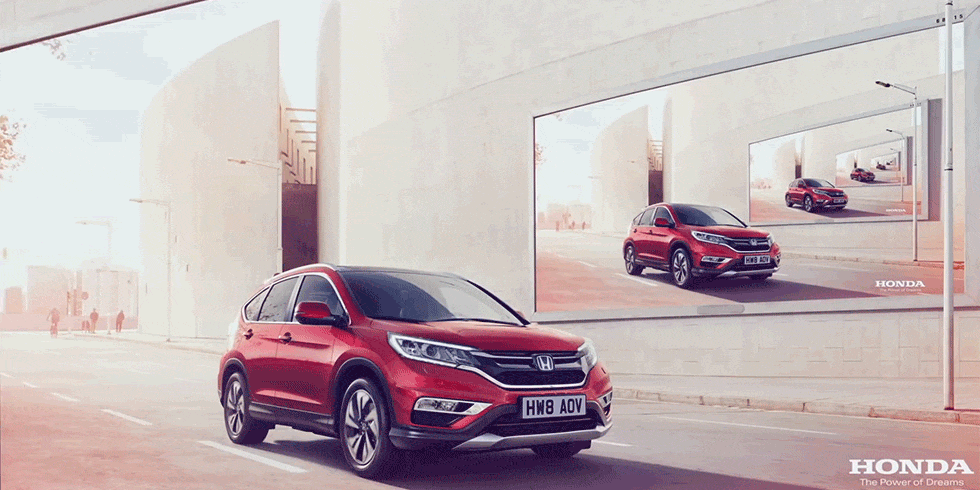
At Glassworks we started to study his notes and prepare for what seemed like a complicated challenge, but to our surprise this was a project that felt like a russian doll in which a problem solution is the beginning of yet another very scary problem and the multidimensional technical challenge compounded with the artistic needs blew our brains for 4 months in which previsualisation, layout planning, model making blueprints, car animation and camera timings and lighting were studied in depth.
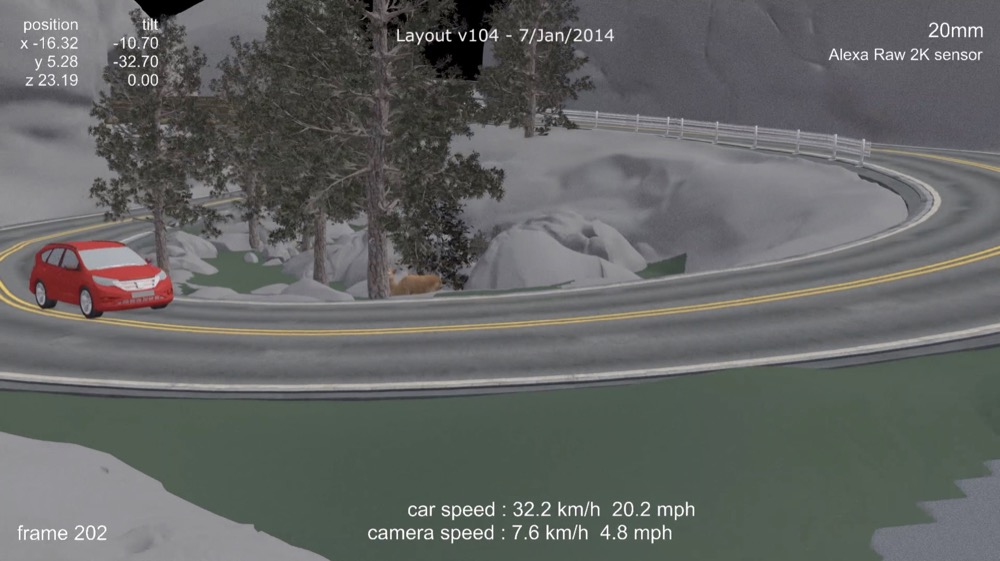
The idea got specially twisted as it is based on a real location found in the US called “pigtail bridge” the director found in the gorgeous scenery of the mountains was simply impossible to shoot as there was snow and its inaccessible configuration.
Instead we took the challenge to recreate the location using a state of the art miniature designed with the help of 3D tools so we embarked on a research and previsualization period with the director in which we constructed his novel “Droste effect”.
For this, camera timing, radius of the move, car animation, positioning of the elements had to be configured in such a way that we could read the car and be driven to the next “world” in a natural way without revealing the audience the changing scale that took us from a 1⁄10 construction model on Shepperton Studio to a 1⁄100 of it on its first iteration, 1⁄1000 on the second and so on and so forth.
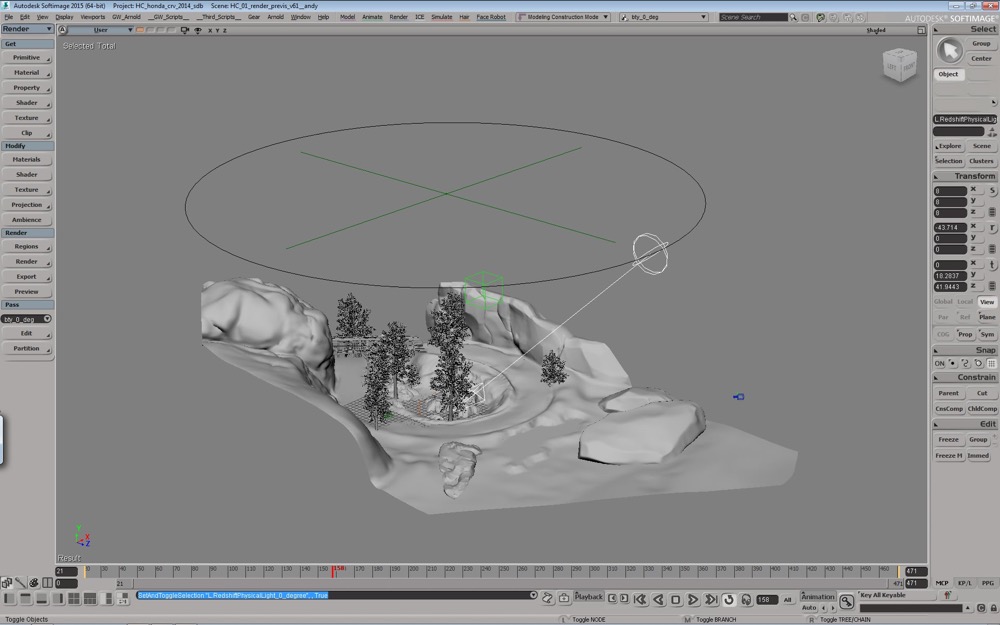
Of course this is impossible to do in real live simply due to the practical limitations of the camera, model making, lighting so as we delved into the problem we planned for a 1⁄10 shoot that could be relatable and the design approach not only took in account the effect itself but the actual possibility of shooting it.
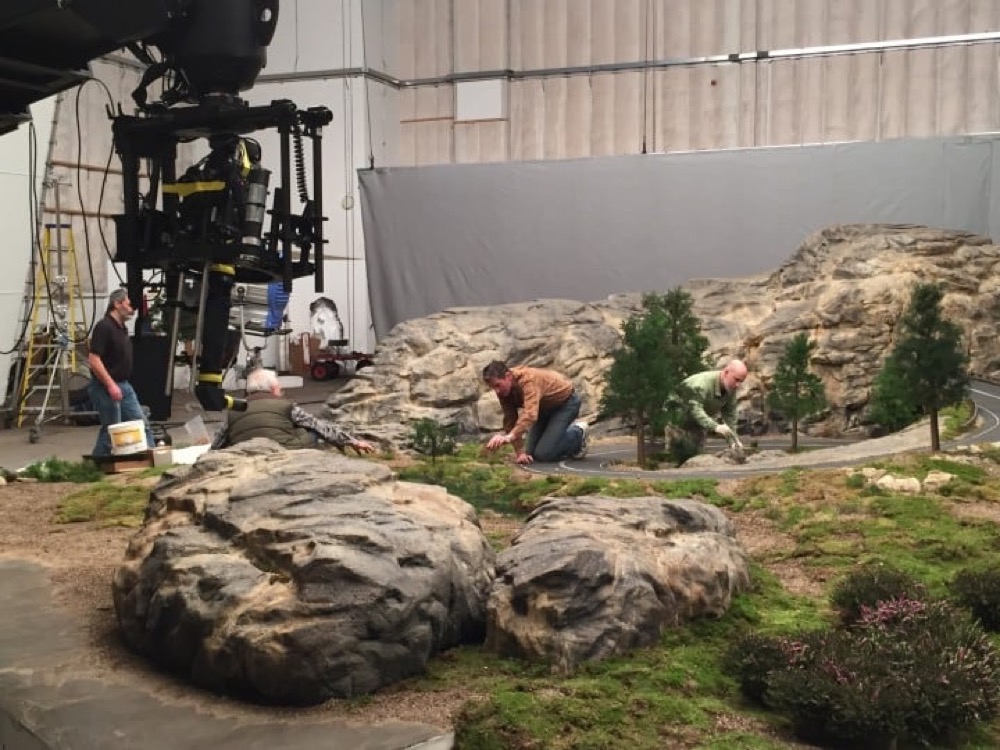
For this we had to use one of the biggest studios in the UK, a titan motion control rig alone with the best production designer and the best model making team in the UK.
The process of designing the environment evolved in such a way that we had to put the elements (trees for example) in the fist world at 1⁄10 scale but as we travelled these would be hitting the camera rig, therefore the layout was not only spatial but in time, meaning that we had to look at the animation in many points in time and space and for this we used Houdini as an invaluable tool that made the process something we could handle and describe using mathematical equations.
The same goes with the car and the many surprises in the film that are carefully designed with the length of the commercial in mind and also the timings to feel natural to the point that 10 more frames would not work as it would look too slow, 10 less frames would look too fast and if we chose to slow it down the whole “canvas” would also had to change.
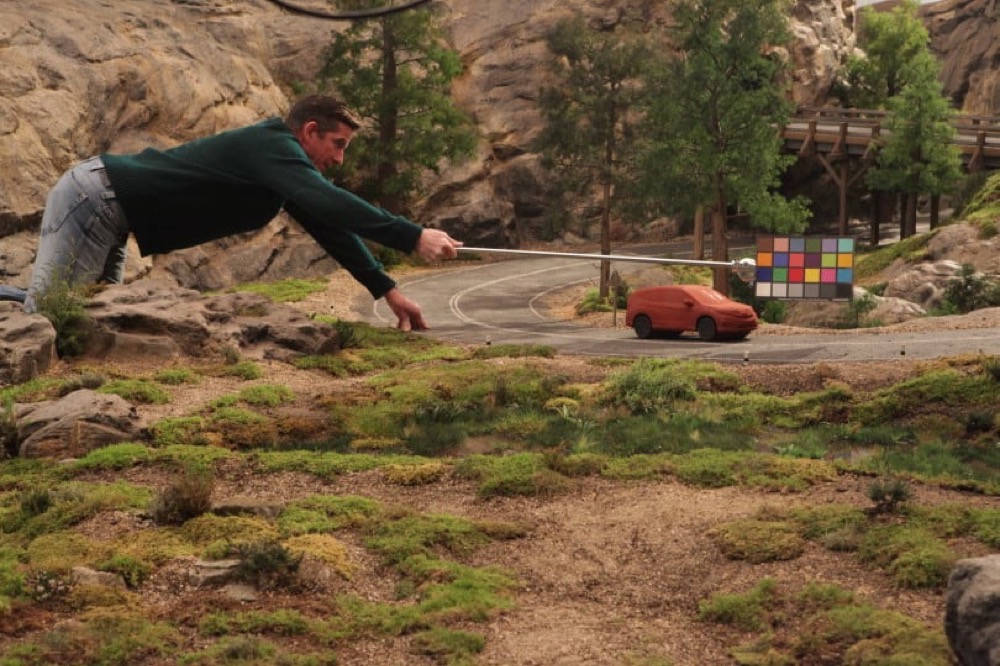
To arrive to this point we managed to create 126 versions of the layout until we hit the sweet spot that you can see in the commercial and that was then the source of many departments.
We then had to create the blueprints for both model making, set design and camera department.
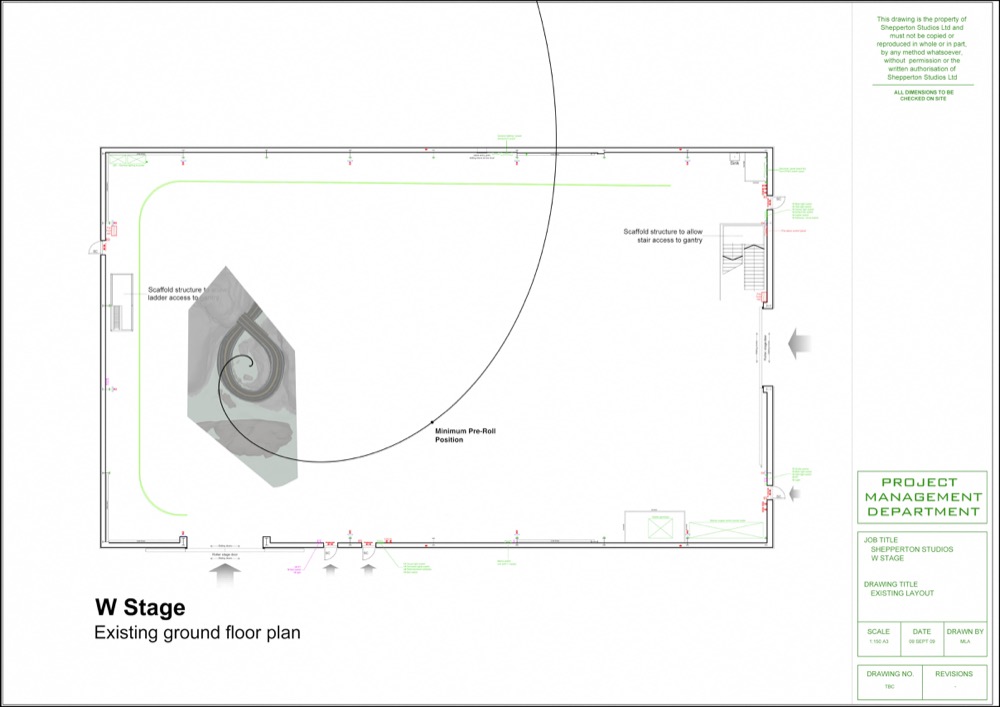
Which in itself was another massive challenge given the elements position would determine in which “world” they were to be constructed and costs considerations were key as we could not simply create 10 trees in real scale nor a camera move of 100 meters long nor rent a studio that didn’t exist.
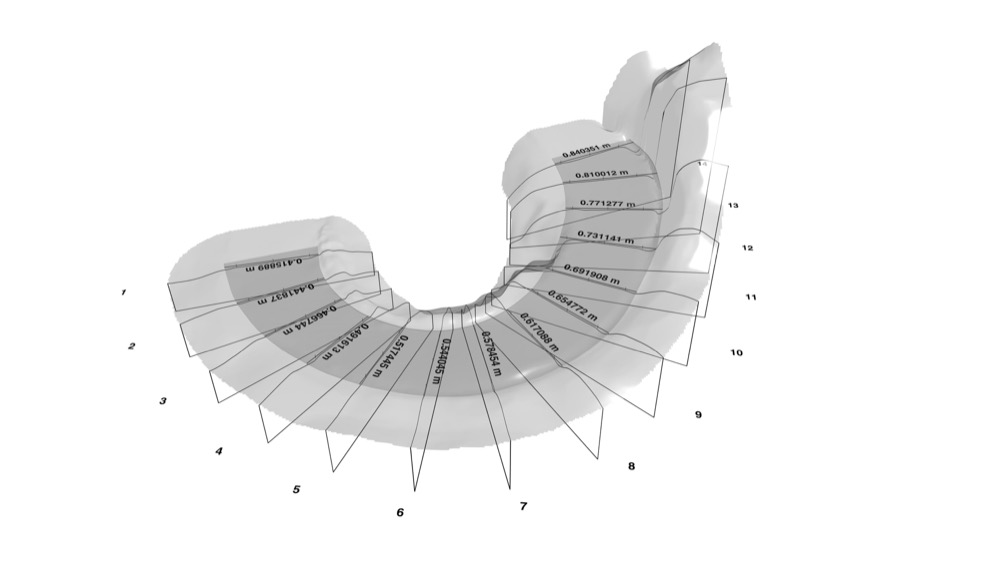
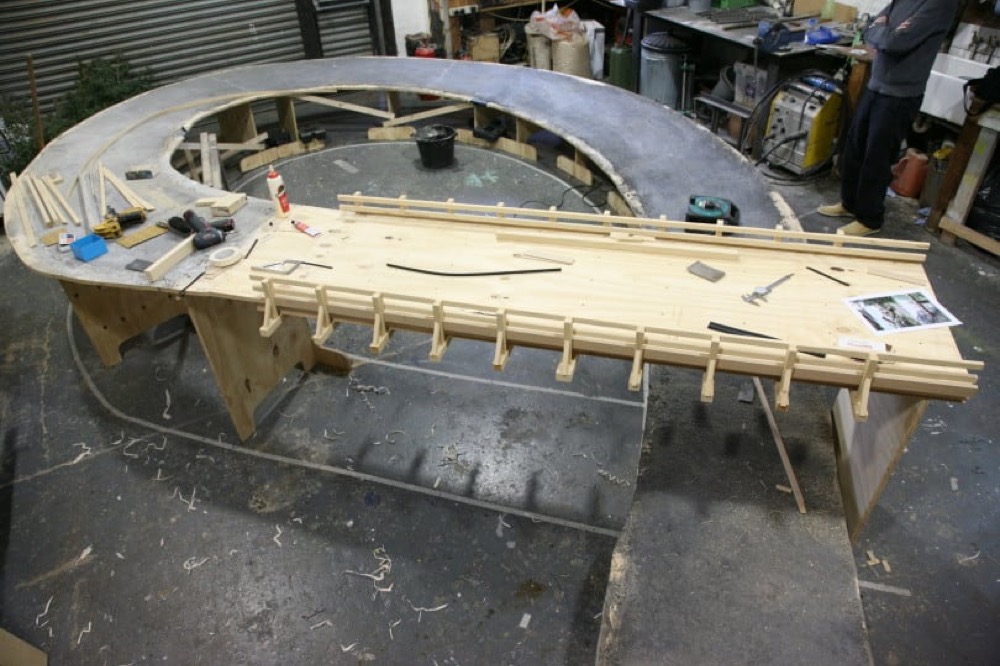
Also in the process lighting positions were studied as on set we wouldn’t be free to put the lighting in any position we wanted, for this we relied in Redshift for quick responsive rendering in which we produced day, night, dusk, dawn, rain and evening scenarios with the current set of lights we would have on set and easy on/off configurations that would allow us to reverse from East lighting to West lighting quickly as we had only 2 days to shoot.
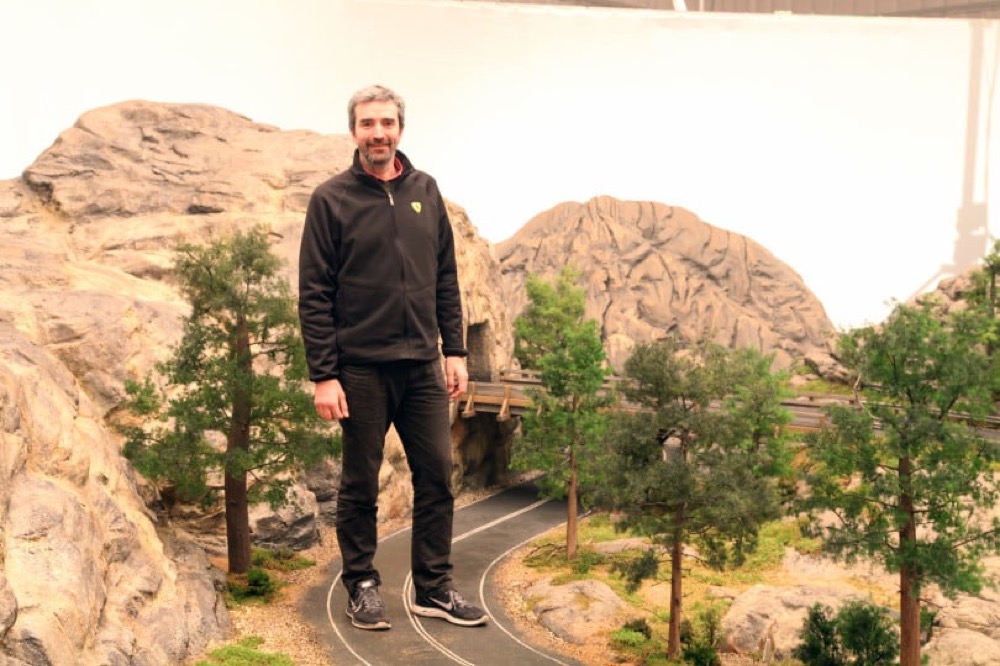
The sensation when we arrived to the set for the first time and saw our own little world built for real was extraordinarily weird, every rock was in its place and the extra magic doing it for real was clearly there.
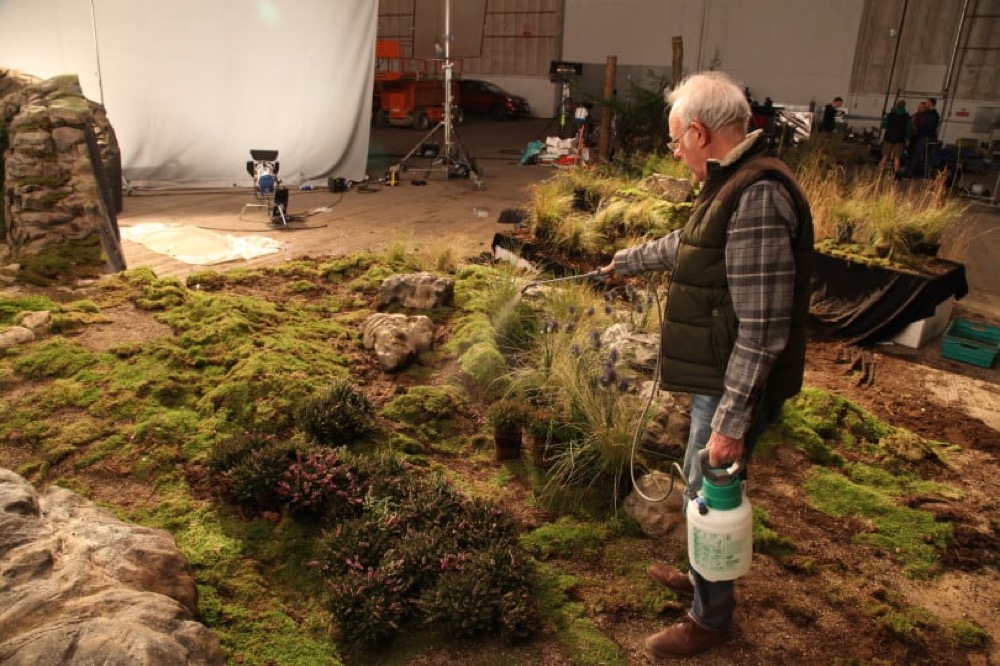
During the shoot atmospheric effects, dust, water were used to bring the set to life but how do you shoot the lights at night?
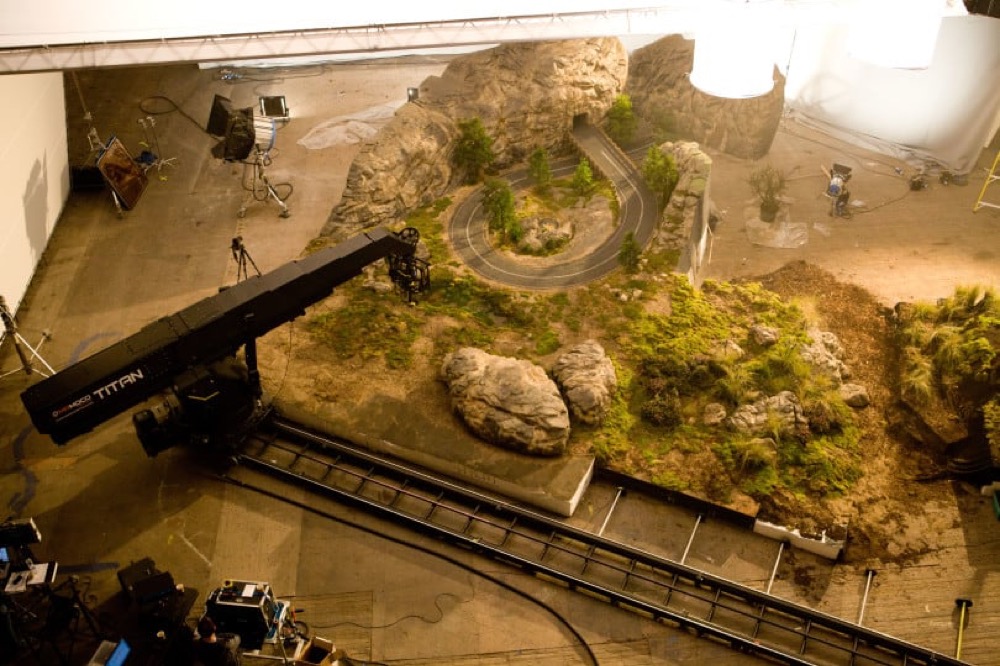
For the night shot we wanted to use the real car lights so a miniature light rig was constructed and with our blueprints at hand we mapped the car animation path frame by frame in huge pieces of paper so we could stop motion the car animation, something we had to do in reverse as we needed to take the paper out and this forced us to animate in reverse, after 4 hours of painstaking frame by frame animation we finish it and had in our hands a perfectly timed matching our CGI car animation and wonderfully integrated lighting that provided the final ingredient to the colossal effort from all departments.
Once the shoot was finished our job started again as this time we started working on the project from the point of view of adding a CGI car, animals and composite the various pieces together.
We continued in Softimage using Redshift adding lots of elements to bed the car and the various elements into the shot to give the film the final quality.
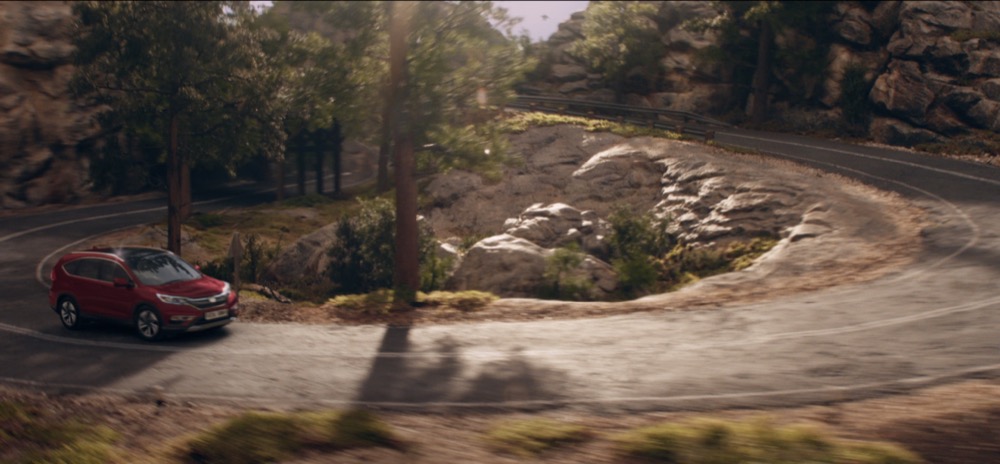
Funny enough this time we flipped the image so we could see the result as it was meant to be shown… we have been working right to left so we could later on judge the piece in its full glory as if we never saw it together… all worked fine.
Once again the novel approach taken at Glassworks to get the most of traditional methods combined with cutting edge CGI has led to a wonderful piece that may seem, like the engineering behind a Honda car, effortless, but hides inside some of the most incredible creative and technical challenges we could take.
One more thing… did you notice the Youtube video was connected to the weather and time of day of the location you were connecting from? In real time? Yeah… I guess I should write a book about this job as it was so extraordinary.
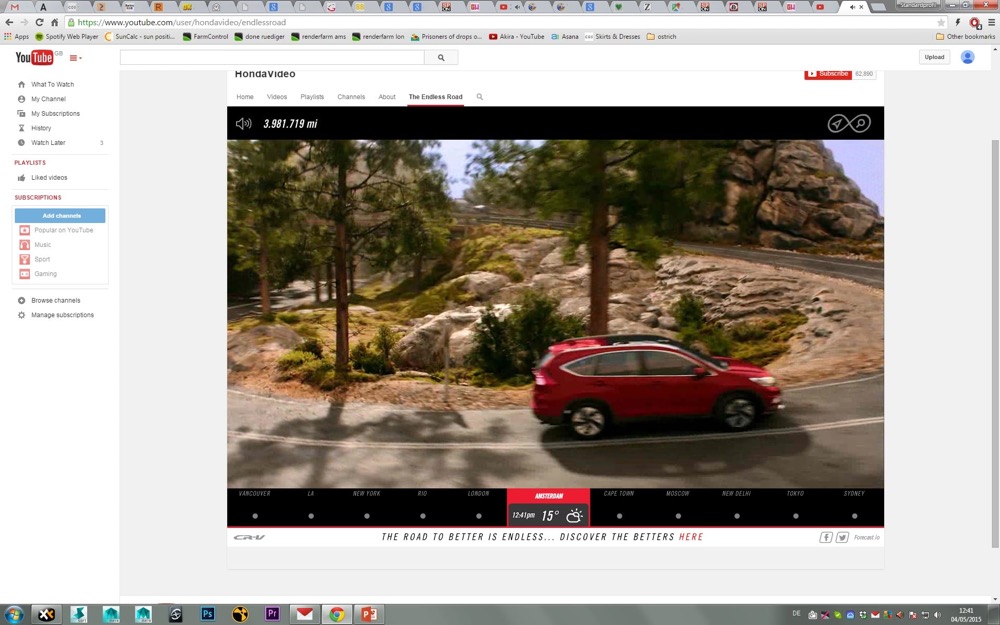
Credits
Director: Chris Palmer Agency: McBarryBowen Production: Gorgeous Task: CG Lead
Flame : Tom Sparks + Lewis Saunders Model making : Jose Granell (Magic Camera Company) Production design : Brian Morris